Sea Bright Shore Palaces
Sea Bright’s magnificent 19th century oceanfront mansions …
A classic part of town heritage were the massive “cottages” — seashore castles made of wood — that were built along Sea Bright’s coast. Residential development in the area started about 1870 — bringing grand showplaces for Sea Bright’s glory days as a resort. The wealthy built big and gaudy in the late 19th century.
Sea Bright’s spectacular coastal positioning — a narrow barrier beach separated by an ocean and a river — allowed for plenty of architectural grandiosity. And remember that most of these were just “summer homes” for the elite of the time who commissioned them. By July 1878 the Red Bank Daily Register was describing Ocean Avenue in Sea Bright as “one of the most magnificent drives in the world, having the broad Atlantic on one side and the Shrewsbury River on the other, with the verdure covered and heavily wooded Highland heights behind.”
Regrettably, time and tide has taken all of these old seashore houses.
Note: Most of these “cottages” are unidentified. If you have more or better info please share — HERE.
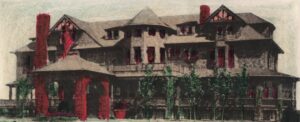
Washington E. Connor cottage on Ocean Avenue, 1900. A very successful Wall Street stockbroker, Connor retried in 1887 and invested in Sea Bright land. He was also a business partner of Jay Gould.
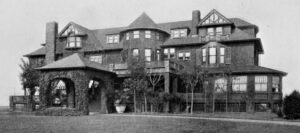
Washington E. Connor house on Ocean Avenue, 1903. Connor spent $30,000 to build a 640-foot stone bulkhead along his oceanfront property in June 1902.
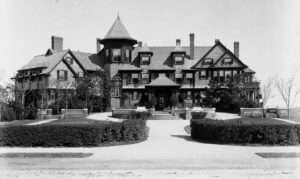
Sea Bright Spectacular — The Cromwell estate on Ocean Avenue, 1905. William Nelson Cromwell’s “magnificent summer estate” was in the Low Moor section of Sea Bright. Born in Brooklyn in 1854, educated at Columbia Law School, when he closed the Panama Canal treaty deal in 1902 he earned the highest fee in American lawyer history ($2 million). He died in July 1948.
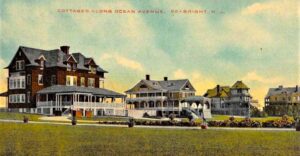
Millionaire’s Row: Sea Bright cottages along Ocean Avenue, early 1900s. The wealth of these mansion owners was fantastic back then — mostly until 1913 when the 16th Amendment was ratified allowing Congress to levy an income tax.
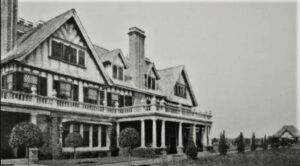
Joseph C. Hoagland house on Ocean Avenue, 1895. Founder and president of the Royal Baking Powder Company, he grew very wealthy before his death in 1899. The English Manor house had grounds laid out by Frederick Law Olmsted.
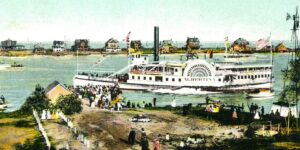
The SS Alberta docks in Highlands, 1890s. In the background note the massive mansions along the Sea Bright coast (Susan Sandlass Gardiner Photo).
Also: “Wooden Palaces” of Monmouth Beach — MORE INFO
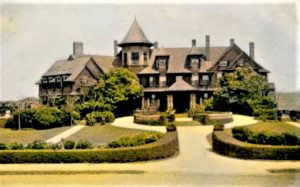
William Nelson Cromwell summer home on Ocean Avenue, early 1900s. The Ocean Avenue spot later became the location of the Edgewater and Driftwood Beach Clubs.
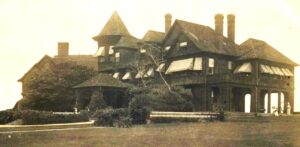
Cromwell house, early 1900s. In 1904, Cromwell (1854-1948) was paid $2 million for his legal work on the treaty creating the Panama Canal Zone — up until then it was the highest fee ever paid to a lawyer.
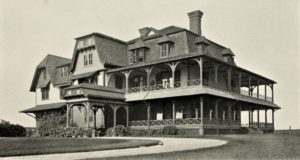
John L. Riker house on Ocean Avenue, 1903. When he died in July 1909 at his house in Sea Bright, his estate was valued at $28 million.
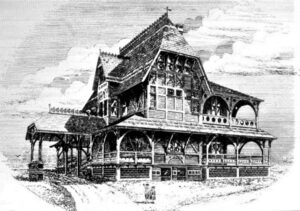
Theodore Timson house on Ocean Avenue. Designed by R.H. Robertson in 1875, it is perhaps the first area house to feature Queen Anne-Style architecture.
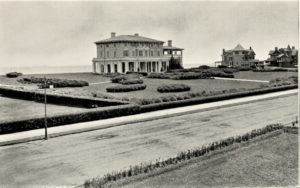
James A. Scrymser house on Ocean Avenue in Low Moor, 1903. He was President of the Central and South American Cable Company. Later on the Trade Winds Beach Club was built at this location.
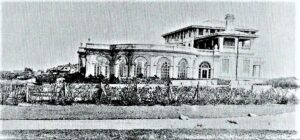
Scrymser cottage, 1910. After distinguished Civil War service, he became a telegraph/cable line pioneer.
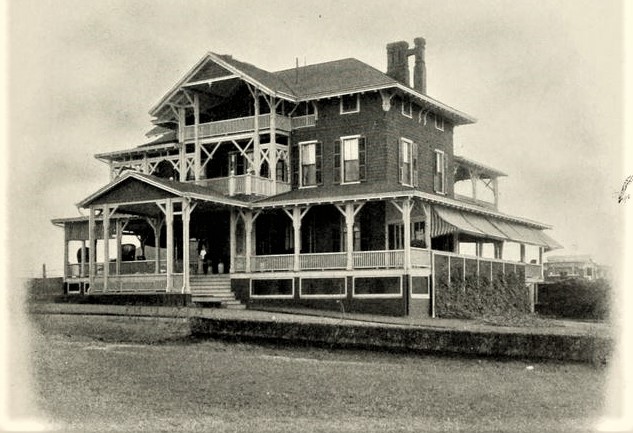
J. Harsen Rhoades house on Ocean Avenue, 1903. He was president of the Greenwich Savings Bank of New York. Chartered in 1833, It was the nation’s 16th largest bank before closing in 1981.
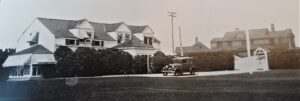
Brainard Avery house, 1927. The Ocean Avenue area now is mostly the newMcCloone’s Rum Runner restaurant.
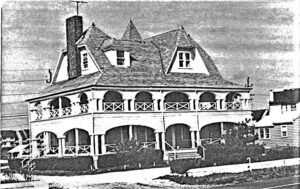
St. Peter’s College retreat villa on Ocean Avenue, 1980. The house in Low Moor was built in 1880 and designed by Charles Gambrill and Henry Ficken. St. Peter’s is a Jesuit university in Jersey City.
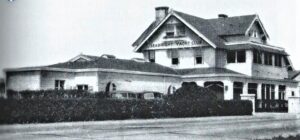
Sea Bright Yacht Club, 1920s. The club, which “catered almost exclusively to cafe society,” was raided in 1946 for operating an elaborate gambling room.
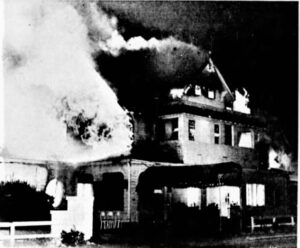
Sea Bright Yacht Club on Ocean Avenue on fire. APP, August 1954. John Osterstock had just agreed to sell the place to Edward Mooney, Jr. for $51,000. Formerly a private residence, it had been moved from the ocean-side to the river-side years previous.
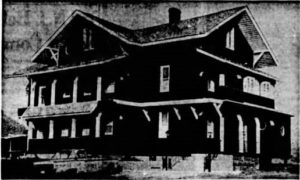
Ancient Mariner Restaurant on Ocean Avenue, 1963. John Kertesz and his wife renovated a century-old Ocean Avenue mansion and opened a 125-seat Hungarian-American restaurant in January 1963. It burned down in July 1963.
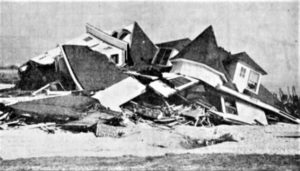
Emily’s Guest House on Ocean Avenue in ruins after a major storm. Long Branch Daily Record, November 1953. William and Emily Osiecky were owners at the time.
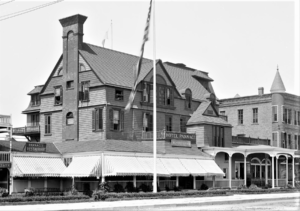
Hotel Pannaci, 1905. Eduard Pannaci acquired the hotel in 1887 for $22,500 from the estate of Hillborn Roosevelt (FDR’s uncle), who called it “Harmony Hall.” After many years of prosperity and additions, the hotel closed in 1939. Pannaci died March 1944 at age 90. It became the Charles Manor in 1947.
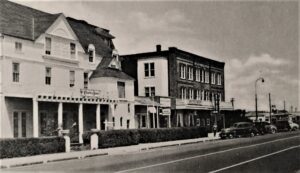
Charles Manor (l) and Sea Bright Inn (r), 1940s. The Charles Manor, the old Pannaci Hotel, was run by Joseph and Dorothy Charles starting in 1947. Both buildings were damaged by a major fire in October 1953. William Osiecky owned the SB inn when the fire struck. The manor had 45 guest rooms; the inn had 23.
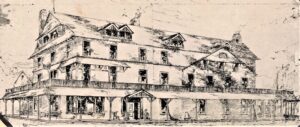
Sea Bright Hotel sketch, July 1882. Designed by H. Edwards Ficken of NYC. (Long Branch Public Library Photo).
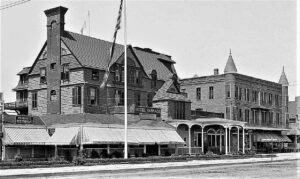
Hotel Pannaci (l) on Ocean Avenue, 1905. Built in 1979 and moved in 1881, F.M. Andrews was the architect and V.J. Hedden Sons was the builder.
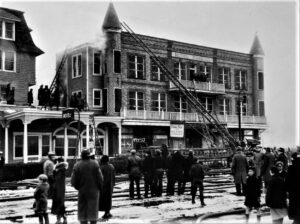
SB firefighters battle a blaze at the Hotel Pannaci (now Tommy’s Tavern + Tap) on Ocean Avenue, Feb. 1935. Italian-native Eduard Pannaci acquired the hotel in 1887 for $22,5000 from the estate of Hillborn Roosevelt (FDR’s uncle). After many years of prosperity, the hotel closed in 1939. Pannaci died March 1944 at age 90.
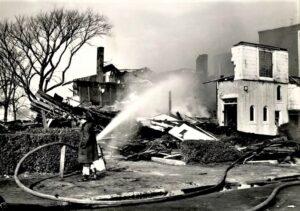
Charles Manor hotel on Ocean Avenue in ruins after a boiler explosion. October 1953. It had been part of the Hotel Pannaci.
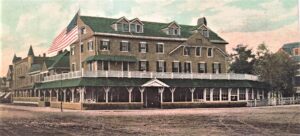
Sea Bright Inn on Ocean Avenue, early 1900s. Built by the Sea Bright Improvement Authority in the 1880s, the spot had more than it’s share of bad luck — hit with major blazes in August 1918, 1936 and in November 1953.
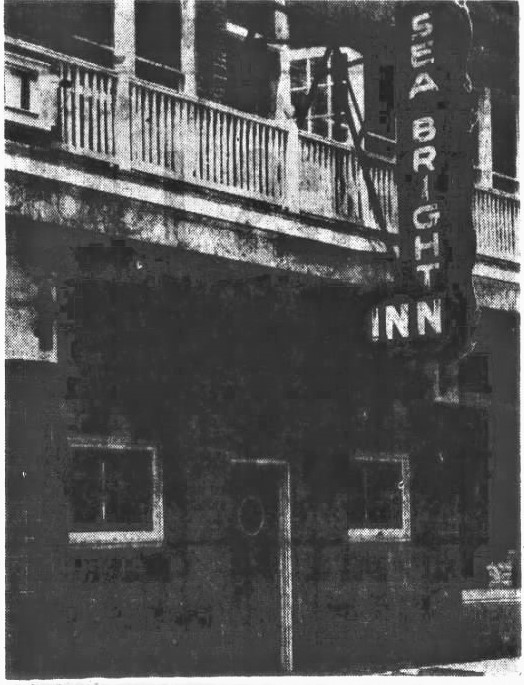
“Grand Opening of the New Sea Bright Inn.” The Daily Register, June 1949. William Osiecky was the proprietor.
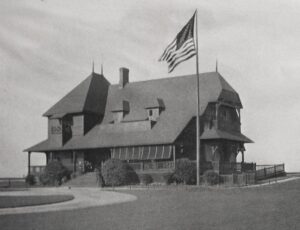
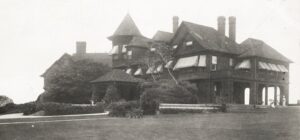
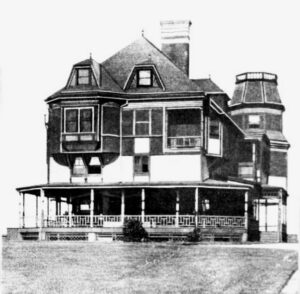
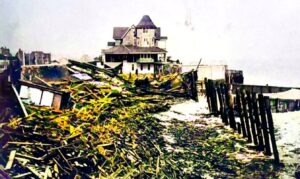
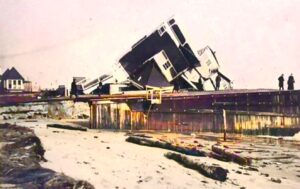
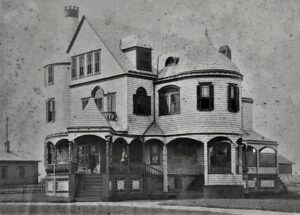
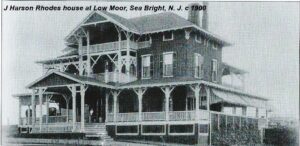
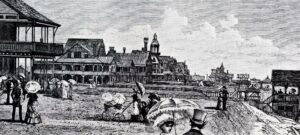
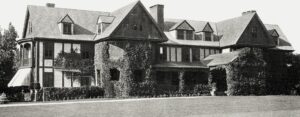
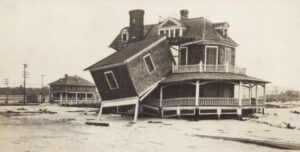
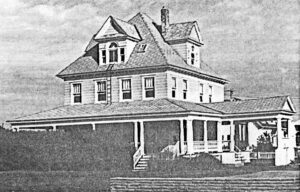
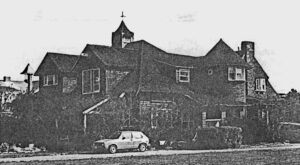


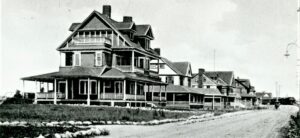
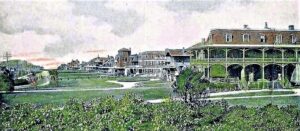
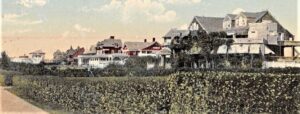
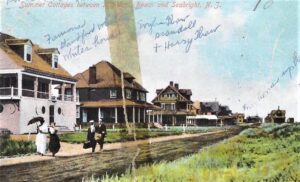
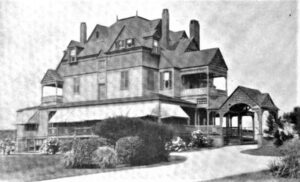
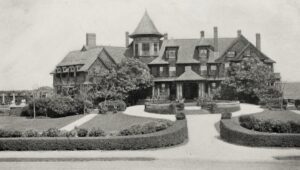
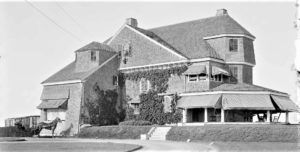
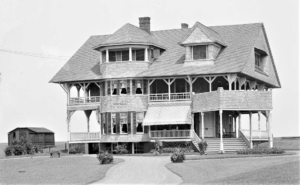
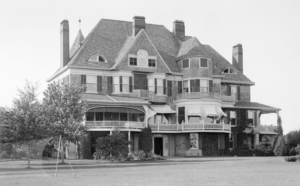
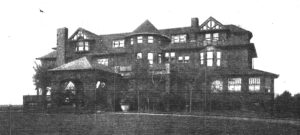
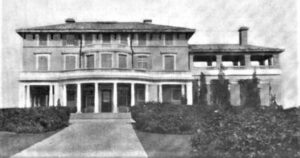
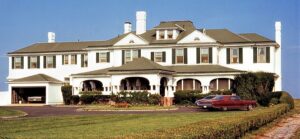
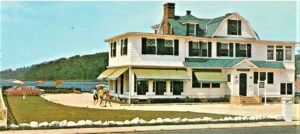
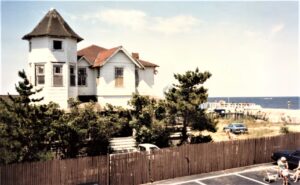
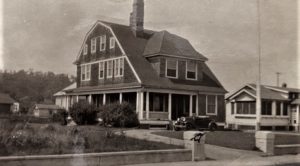
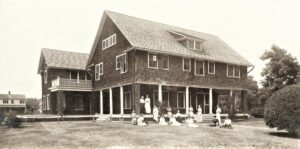
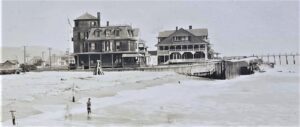
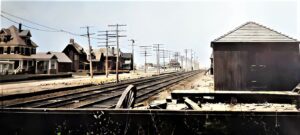
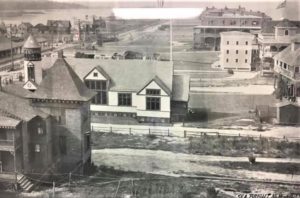
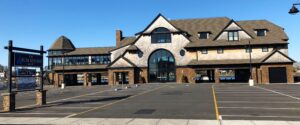
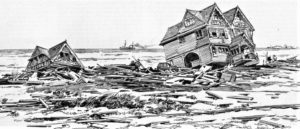
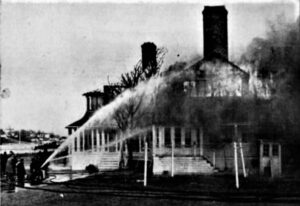
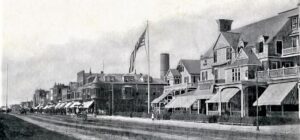
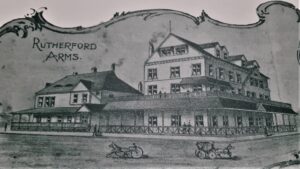
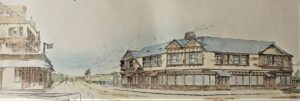
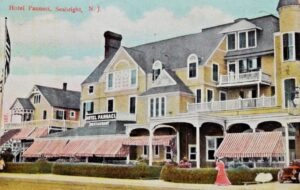
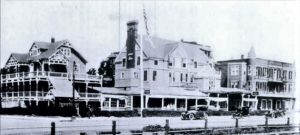
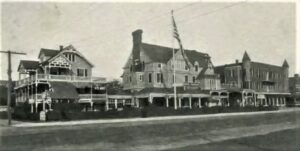
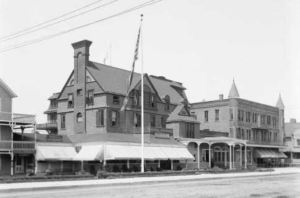
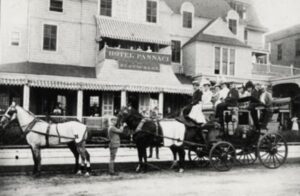
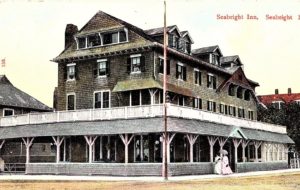
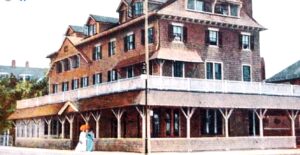
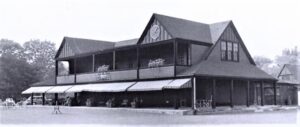


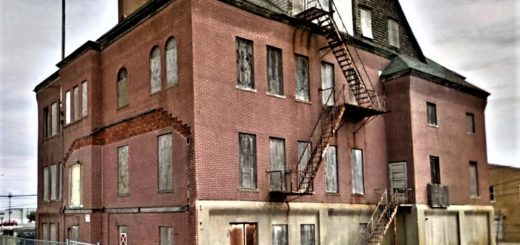


I grew up in the mansion (7th photo from top of page) in 1200 Ocean Ave. Sea Bright in the 1960s. The photo was taken in the 80s with my VW Rabbit car parked in the driveway! It was a beautiful property, with views of the Shrewsbury river and huge green lawn 3/4 of an acre. It was originally the stable for the Washington Connor mansion across the street on the ocean. We used to walk past it on our way to the beach. Unfortunately that mansion was destroyed by one of the many SB fires of those days. It was replaced by condos and a new era of SB. I was so fortunate to have lived there in that older era, however briefly. It will never be the same. There will always be a piece of my heart and love left in SB….